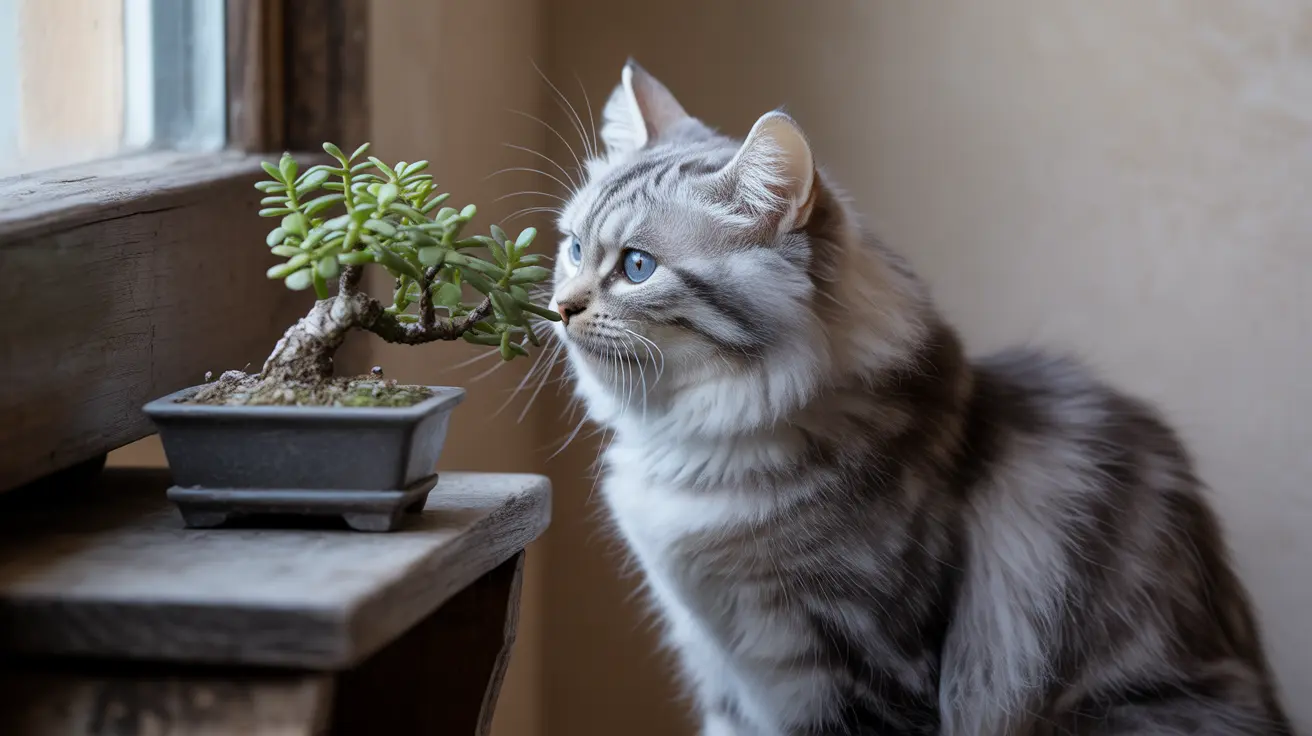Introduction
For cat owners who love bringing nature indoors, bonsai trees present both an aesthetic opportunity and a potential safety concern. While these miniature trees can create stunning indoor displays, many pet parents wonder: are bonsai trees poisonous to cats? The answer isn't straightforward, as toxicity levels vary significantly between different bonsai species.
Understanding which bonsai varieties pose risks to your feline friend and knowing how to prevent accidental poisoning is crucial for maintaining a safe home environment. This comprehensive guide will explore the dangers certain bonsai species present to cats, identify safe alternatives, and provide essential safety measures for pet owners.
Most Dangerous Bonsai Species for Cats
Several common bonsai varieties can be extremely toxic to cats, with some capable of causing severe illness or death if ingested. The most hazardous species include:
Sago Palm
This is arguably the most dangerous bonsai for cats. All parts of the plant contain cycasin, a toxin that can cause rapid liver failure. Even small amounts can be fatal without immediate treatment.
Azalea/Rhododendron
These popular bonsai choices contain grayanotoxins that can severely disrupt heart function and nervous system operation in cats. Even a few leaves can cause serious symptoms.
Jade Plant
All parts of the jade plant are toxic to cats, causing symptoms ranging from mild gastrointestinal upset to severe coordination problems.
Common Symptoms of Bonsai Poisoning in Cats
If your cat has ingested parts of a toxic bonsai, watch for these warning signs:
- Vomiting and diarrhea
- Excessive drooling
- Lethargy or weakness
- Loss of appetite
- Tremors or seizures
- Difficulty breathing
- Yellow gums or eyes (particularly with Sago Palm poisoning)
Safe Bonsai Alternatives for Cat Owners
Fortunately, several bonsai species are considered non-toxic to cats:
- Money Tree (Pachira aquatica)
- Parlor Palm
- Bamboo Palm
- Chinese Elm (with supervision)
- Haworthia succulents
Prevention and Safety Measures
To keep your cats safe while enjoying bonsai trees:
- Place toxic bonsai species in rooms cats cannot access
- Use plant stands or high shelves out of jumping range
- Install physical barriers like decorative screens
- Clean up fallen leaves and debris promptly
- Consider using deterrent sprays around plant areas
- Provide cat-safe plants as alternatives
Emergency Response
If you suspect your cat has ingested any part of a toxic bonsai:
- Identify the specific bonsai species if possible
- Contact your veterinarian or pet poison hotline immediately
- Do not induce vomiting unless specifically instructed
- Monitor your cat's symptoms and vital signs
- Be prepared to seek emergency care
Frequently Asked Questions
Are bonsai trees poisonous to cats if they only brush against the leaves or do they have to ingest them?
Most bonsai trees are primarily dangerous when ingested. However, some species like Ficus can cause skin irritation from contact. The biggest risk comes from cats eating any part of toxic bonsai plants.
Which common bonsai tree species are the most toxic and dangerous for cats to ingest?
Sago Palm is the most dangerous, followed by Azalea/Rhododendron, Jade Plant, and Ficus species. Sago Palm can cause fatal liver failure, while others can lead to severe cardiac and neurological issues.
What symptoms should I watch for if my cat has chewed on a bonsai tree?
Watch for vomiting, diarrhea, excessive drooling, lethargy, loss of appetite, tremors, and difficulty breathing. With Sago Palm poisoning, yellowing of the gums or eyes (jaundice) is a serious warning sign.
What are some safe bonsai tree varieties that I can keep around my cat without worry?
Safe options include Money Tree, Parlor Palm, Bamboo Palm, and Chinese Elm. These species are not known to cause toxicity in cats, though supervision is still recommended.
How can I prevent my cat from accessing or ingesting toxic bonsai trees in my home?
Place bonsai trees in closed rooms or on high surfaces, use physical barriers, maintain regular cleaning of fallen plant material, and provide cat-safe alternatives like cat grass to redirect their interest.
Conclusion
While bonsai trees can add beauty to your home, cat owners must carefully consider their choice of species and implement proper safety measures. By selecting non-toxic varieties and taking appropriate precautions, you can enjoy the art of bonsai while keeping your feline family members safe and healthy.






